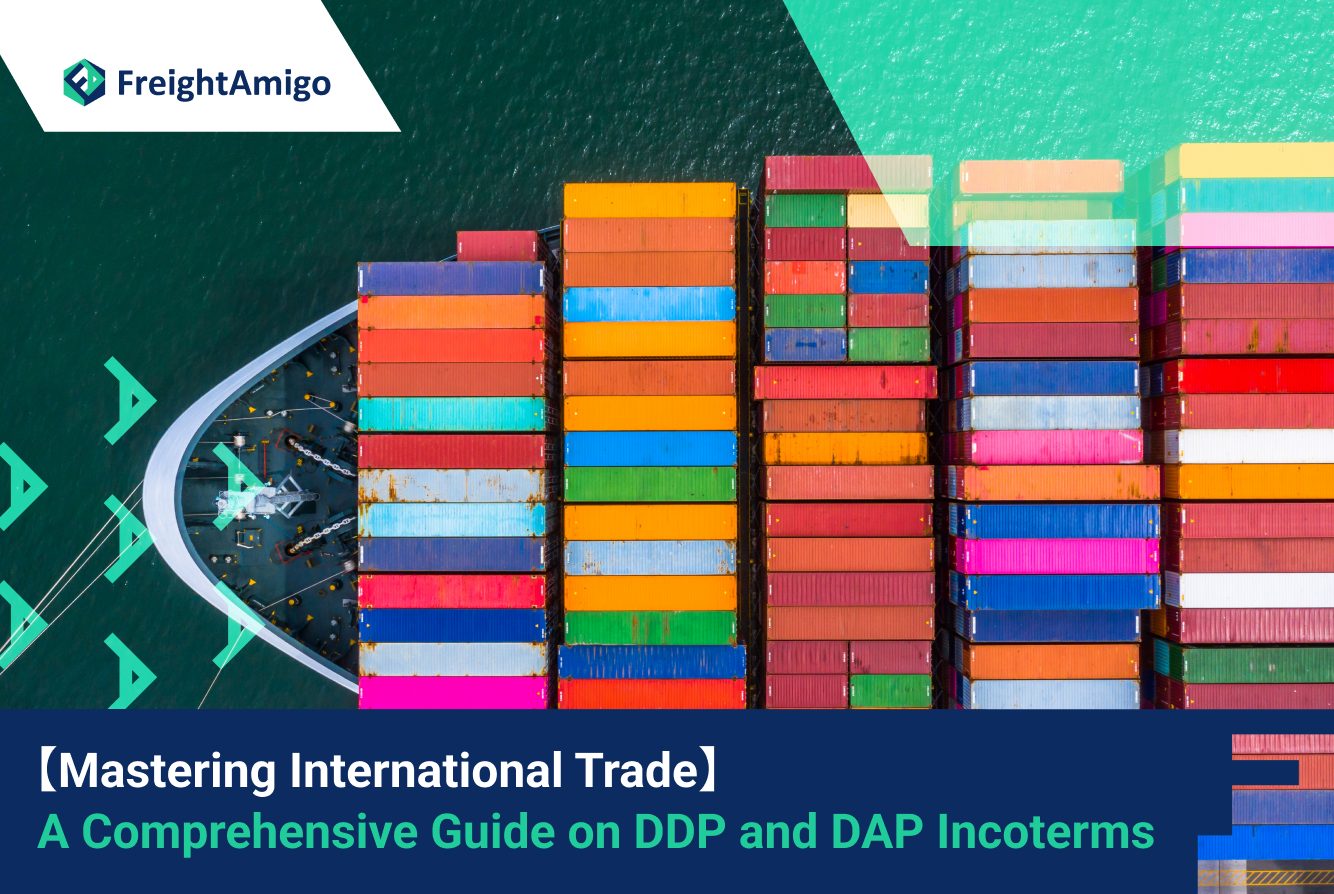In the intricate landscape of international trade, understanding the rules of the game is crucial. Among these rules, Incoterms are the most significant ones, dictating the responsibilities and risks shared by buyers and sellers in a transaction. This article dives deep into two principal Incoterms – DDP (Delivered Duty Paid) and DAP (Delivered At Place), elucidating their definitions, responsibilities, and risk transfers. Equipped with this knowledge, you can navigate the realm of global trade with confidence and efficiency.
Want To Compare The Best Express, Air Freight, Sea Freight, Rail Freight & Trucking Rates So As To Have Better Control On Cost?
Incoterms: An Overview
Incoterms, or International Commercial Terms, are internationally recognized agreements that delineate the obligations of buyers and sellers in global shipping. Crafted by the International Chamber of Commerce (ICC), these terms provide a standardized outline for trade, promoting clarity and reducing misinterpretations. They are instrumental in streamlining international transactions, thus minimizing disputes and fostering smoother operations.
DDP (Delivered Duty Paid): A Closer Look
Defining DDP
Under the DDP (Delivered Duty Paid) agreement, the seller assumes all risks and costs linked with delivering the goods to the named place of destination, ready for unloading and cleared for import. This Incoterm vests the maximum responsibility and risk on the seller.
Unpacking DDP Responsibilities and Risk Transfer
In the context of the Incoterms 2020 rules, DDP places several responsibilities on the seller:
- Undertaking export clearance
- Bearing all risks and costs associated with delivering the goods
- Unloading goods at the terminal at the named port or place of destination
- Clearing the goods for import and payment
- Delivering the goods to the place of destination
Moreover, under DDP, the seller is obligated to pay all import duties, the requisite Value Added Tax (VAT), and other taxes, and execute all customs formalities. However, this poses significant risks for the seller due to the complexities of import clearance procedures and currency exchange risks.
DAP (Delivered At Place): A Detailed Examination
What is DAP?
The DAP (Delivered At Place) term indicates that the seller is responsible for all charges and risks in transit until the goods reach their destination (at a named place). DAP is a versatile term ideal for use in multimodal transport. The risk of loss stays with the seller until the goods arrive at the named place.
Delineating DAP Responsibilities and Risk Transfer
Under the Incoterms 2020 rules, the buyer is responsible for all costs and risks associated with unloading the goods and clearing customs to import the goods into the named country of destination. With DAP, cost and risk transfers from seller to buyer at the point the goods are available for unloading.
DDP vs DAP: Making the Right Choice
Navigating the choice between DDP and DAP can be tricky and hinges on multiple factors. While DDP places the highest level of responsibility on the seller, it also involves significant risks due to the complexity of import clearance procedures and currency exchange risks. On the other hand, DAP offers more control to the exporter without the burden of import duties and taxes.
Frequently Asked Questions (FAQs) About DDP and DAP
In this section, we address some common queries about DDP and DAP to further clarify their implications.
What are the risks for sellers when using DDP?
The primary risk for sellers using DDP revolves around the complexity of import clearance procedures and the difficulty in finding reliable customs brokers in destination countries.
What are the risks for buyers when using DAP?
Under DAP, buyers are responsible for unloading the goods at the named place of destination and clearing customs for importation. This requires a competent customs broker and a clear understanding of import procedures and fees.
Can sellers choose DAP instead of DDP to reduce risks?
Yes, sellers who prefer more control over the shipment can opt for DAP, thereby avoiding the complexities and risks associated with import duties and taxes.
Are DDP and DAP suitable for all types of shipments?
While DDP and DAP can be used for any mode of transportation, their suitability depends on the nature of the goods, the destination country’s customs regulations, and the preferences of the parties involved.
In conclusion, understanding DDP and DAP Incoterms is pivotal for successful international trade. These terms, while complex, play a significant role in determining the responsibilities and risks associated with global transactions. By comprehending these terms thoroughly, businesses can establish clear expectations, reduce disputes, and facilitate smoother operations. Remember, the key to successful international trade is to stay informed, understand the rules, and seek professional guidance when needed.
There Are Different Options For Cargo Transportation. If You Want To Choose The Most Convenient And Suitable Solution, It Is Best To Have The Full Support Of Logistics Experts! If You Are Planning To Ship Goods Overseas, Please Go To The FreightAmigo Page For Inquiries.
===
Read More:
【Logistics News】Singapore to Sign Declaration on Green Shipping Corridors
FreightAmigo Won Startup Grand Award In TechChallenge — Digitising Trade Finance
Sailing Schedule: Streamlining Logistics Operations for Efficient Shipments
===
If you have any inquiries on logistics/supply chain, feel free to contact FreightAmigo now:
Chat with us online OR
Phone : +852 28121686
WhatsApp: +852 27467829









































